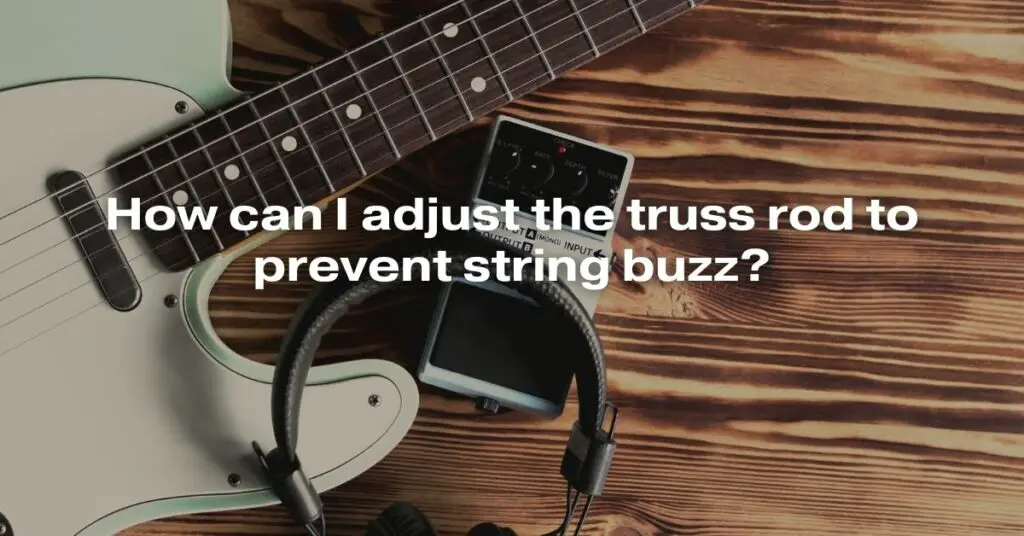String buzz can be a frustrating issue for guitarists, affecting the quality of sound and overall playing experience. Fortunately, many cases of string buzz can be resolved by adjusting the truss rod, a crucial component of your guitar’s setup. In this comprehensive guide, we will explore what a truss rod is, why it matters, and how you can adjust it to prevent string buzz and optimize your guitar’s performance.
Understanding the Truss Rod:
The truss rod is a metal rod that runs along the length of your guitar neck, embedded just beneath the fingerboard. Its primary function is to counteract the tension created by the strings, ensuring the neck remains straight and stable. Changes in temperature, humidity, or string gauge can cause the neck to bow (become concave) or warp (become convex), leading to string buzz issues.
Identifying String Buzz:
String buzz occurs when a string vibrates against a fret due to insufficient clearance between the string and the frets. This phenomenon produces an undesirable, buzzing sound, compromising the guitar’s tone and playability. Common causes include a bowed or warped neck, improper fret leveling, or changes in string gauge.
Tools You Will Need:
Truss Rod Wrench: This tool is specifically designed for adjusting the truss rod and is available in various sizes to match different guitar models.
Capo: Used to temporarily raise the action of the strings, making it easier to diagnose and fix string buzz issues.
Feeler Gauges: These thin strips of metal come in different thicknesses and help measure the gap between the frets and strings, ensuring proper clearance.
Adjusting the Truss Rod: Step-by-Step Guide
Note: Before you begin, make sure your guitar is tuned to its standard tuning and acclimatized to the room’s temperature and humidity.
Step 1: Assess the Neck’s Condition
Use a capo to press down the first fret of the low E string.
Press down the fret where the neck meets the body (usually around the 12th fret).
Check the gap between the string and the frets around the middle of the neck. If there’s significant space, your neck might be too straight. If the string rests heavily on the frets, the neck may be too bowed.
Step 2: Loosen or Tighten the Truss Rod
If the neck is too straight (little to no gap), you need to add some relief. Insert the truss rod wrench into the truss rod nut.
To add relief (counteracting a straight neck), turn the truss rod wrench clockwise (righty-tighty). Start with small quarter-turn adjustments.
If the neck is too bowed (excessive gap), you need to decrease relief. Turn the truss rod wrench counterclockwise (lefty-loosey) in small increments.
Re-check the gap after each adjustment until you achieve the desired clearance (usually around 0.010 to 0.020 inches).
Step 3: Check and Fine-Tune
After adjusting the truss rod, remove the capo and check the entire fretboard for consistent clearance.
Use feeler gauges to measure the gap between the strings and each fret along the neck. Adjust as necessary to ensure uniform clearance.
Play your guitar and listen for any remaining string buzz. If issues persist, consider consulting a professional guitar technician for further adjustments.
Conclusion:
Adjusting the truss rod is a fundamental skill every guitarist should master. By understanding the nuances of your guitar’s neck and how to effectively adjust the truss rod, you can prevent and resolve string buzz issues, ensuring your instrument delivers optimal tone and playability. Remember, patience and small, incremental adjustments are key to achieving the perfect setup for your guitar. Happy playing!

